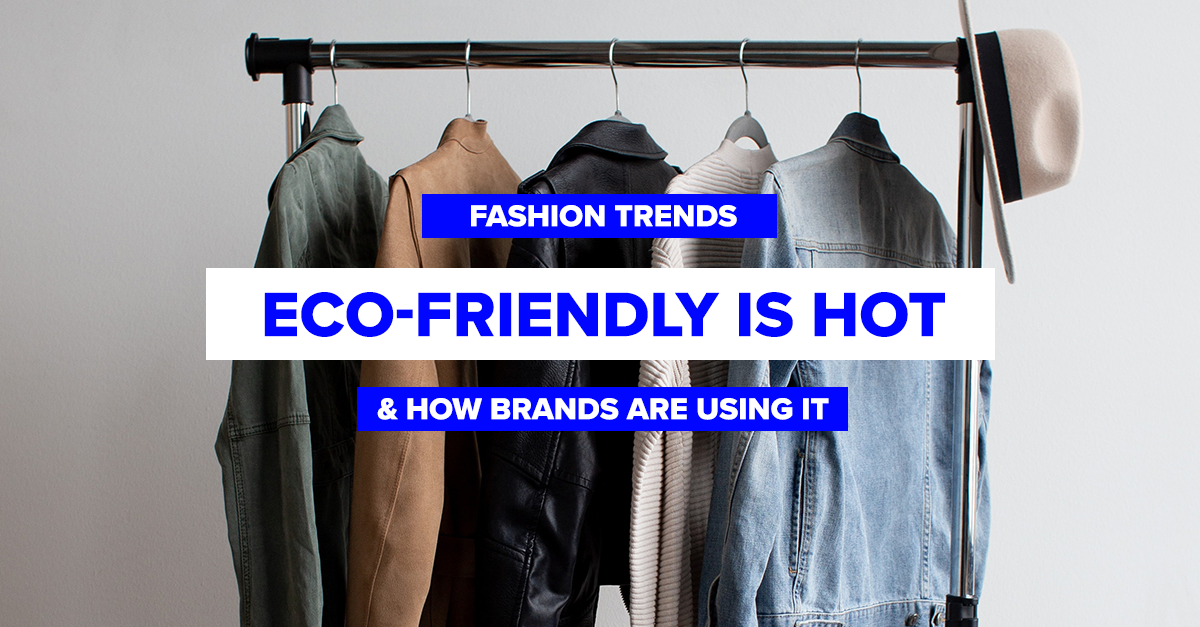
It shouldn’t be a surprise to anyone that the fashion sphere is in constant evolution. New trends are appearing and dying faster than it took the Dior Saddle bag to sell out, thanks to Instagram and the Instababes. Throughout our work with fashion brands, we’ve gathered quite a bit of knowledge on the matter. With this in mind, we’re listing a few pointers in an effort to bring everyone up to speed with the latest and greatest in the industry, while also sharing some of our thoughts.
Eco-Friendly Is the Future
The environment being amongst the most talked about subjects this year, it is understandable that the fashion industry is shifting its efforts to cater to the increasing need for low impact and sustainable living habits. All sorts of brands are throwing their hats into the eco-friendly ring. You’ve got H&M offering their conscious line of products and buy-back program. Then there’s also B-Corp certified brands like NORDEN or Frank & Oak that have eco-conscious practices, or Everlane that has clean and low-waste factories. It is clear that brands want to capitalize on this new trend – which is a very good thing… or is it?
Consider this: is a brand jumping on the eco-friendly bandwagon because clever marketers want to please their audience and increase profits? Or, is their stance on the environment a reflection of the brand’s DNA and a fundamental part of their business? Of course, things are not always so black and white, but we are genuinely interested to see where this trend is headed and how brands will do their part with concrete actions in the future. After all, one of the only fashion brands that has a real impact right now is Tentree, who – as the name suggests – is planting ten trees for every item sold, while only using sustainable materials. I think we can all agree that this is infinitely more concrete than simply filing for eco-friendly certifications and titles.
The advertising machine behind the big ideas
Moreover, let’s drill down on how these companies advertise their efforts, because let’s face it, we’re a content & influencer marketing agency after all. Now, after careful analysis of the brands’ web presence, there seems to be a dominant trend on the tactics used to promote their big ideas. In fact, we noticed that most of these companies were using content marketing as the main focus of their 360 marketing strategies. They are indeed betting on the trust and awareness benefits of the medium to connect with their audiences and promote their cause. For example, Norden leaned heavily on the production of Influencer content with Erin Latimer, a renowned Paralympian that promotes the use of recycled plastics in prosthetics. This strategic alliance created a win-win partnership for the brand by drastically increasing reach and credibility. Also, the brand launched a new rendition of their website that’s core purpose is to put nature and concrete efforts first, and e-commerce second. Overall, the brand achieved extraordinary growth through the strategy we produced by betting on information and awareness before conversion, which isn’t what all eco-conscious brands are doing.
For example, H&M isn’t producing any content around its green line of products and is facing serious backlash from the community on “greenwashing” accusations. They’re accused of surfing on the eco-friendly trend without putting much effort into the cause, like showing their impact or any thoughts on the matter. All in all, content marketing has proven to be a valuable medium to convey brand purpose and we believe more brands should introduce it to their 360 strategies in the future to fuel their growth.

